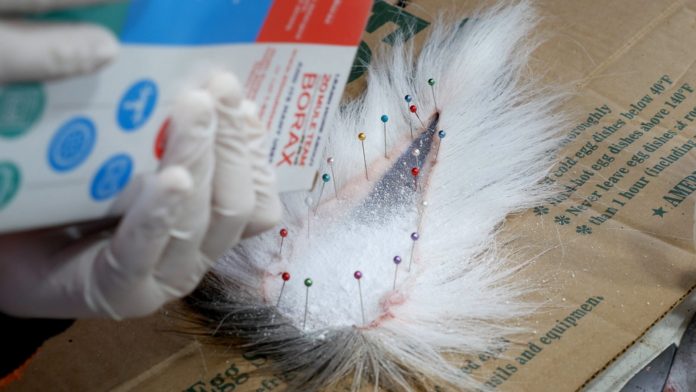Deer tails are a staple fly- and jig-tying material. Whether you’re stocking up on Clouser minnows, Deceivers, bucktail jigs, or any number of patterns, you’re gonna need some tail in your tying kit. But buying deer tails is usually a disappointing experience. Commercial tails often come from deer farms—which bring up some ethical questions—and tend to be low quality unless you drop extra cash for the premium grades.
But if you hunt deer, or know someone who does, you can preserve high-quality bucktails for you and your fishing buddies with just some basic knife skills. Preserving your own tails is cheap, easy to do, and will give you a better product in the end.
Wild deer tails generally have a much straighter, stronger, and fuller fiber than their farmed competitors, not to mention the price is practically free if you can get your hands on them. In addition to tails from your own deer, if you call around to friends, hunting clubs, and deer processors, you can usually gather a ton of unwanted deer tails.
Just freeze all the deer tails you can get, and then defrost and cure them at the end of hunting season. If you do this, you can usually scrounge up enough tails to keep you well-stocked and to give as gifts. So if you tie your own flies or jigs, or have friends who do, stop paying too much for poor-quality tying materials and start curing your own deer tails.
Directions:
- Skin the rear quarters of the deer, then cut the tail off at the base.
- Rinse the tail with soapy water. Pat with a towel and air dry.
- On the bottom (white hair) side, make a single cut down the center of the tailbone all the way from the base to the tip of the tail.
- Carefully cut and separate the skin from each side of the tailbone. Continue to cut, peel, and finesse the bone until it comes out clean.
- Scrape any excess meat or fat off the tail skin.
- Lay the tail fur-side down on a piece of cardboard, then stretch and pin the tail flat to the cardboard.
- Cover all exposed skin and flesh with borax. Set in a cool, dry place for a few weeks, and let the skin dry and cure.
- Remove the pins, brush off the borax, and the tail is ready to be used for tying flies and jigs.
Credit: Source link






























